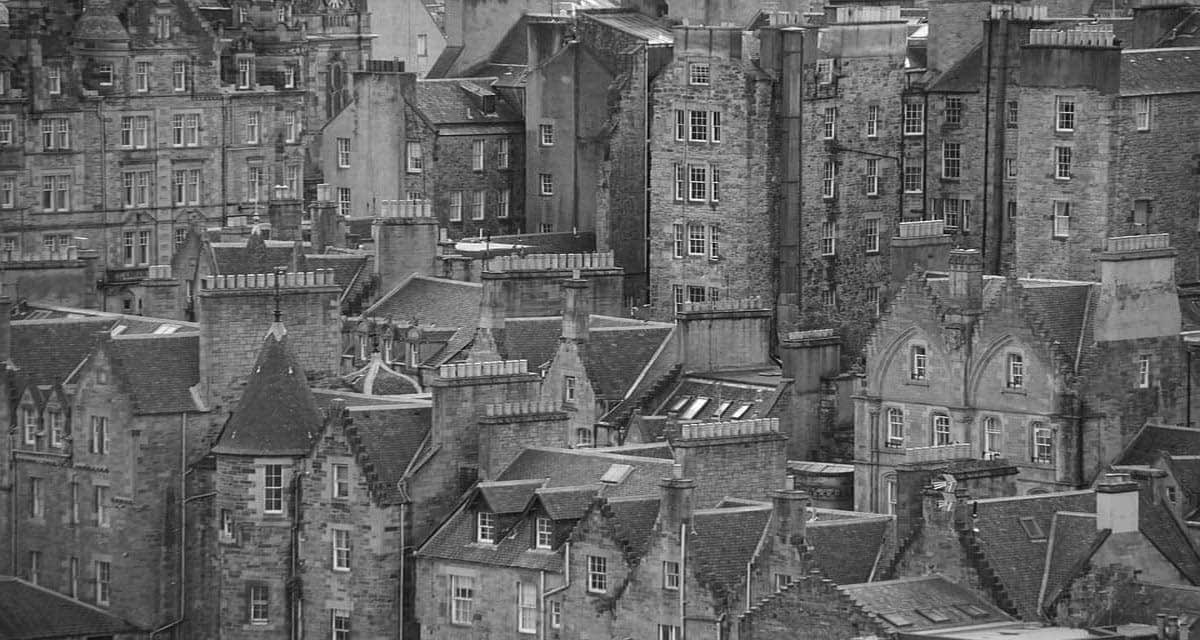
James Braidwood, born in Edinburgh in 1800, was a key figure in the development of modern firefighting. He established the world’s first municipal fire brigade in his home city, laying the groundwork for a more organised and professional approach to fire response.
His efforts were particularly important in Edinburgh’s Old Town, where the tightly packed tenements and narrow wynds made fires especially dangerous and difficult to control.
A major turning point came with the Great Fire of 1824, which caused extensive damage across the Old Town and underlined the need for a dedicated fire service. Braidwood’s leadership during the incident showed the value of trained firefighters and a coordinated response.
Over time, Edinburgh’s fire service developed further, shaped by the young man’s methods and commitment. His influence extended well beyond the city, forming the basis of firefighting practices adopted across the UK and beyond.
Today, his contribution is widely recognised as a milestone in the history of fire safety.
Frequently Asked Questions about James Braidwood:
James Braidwood, son of a local tradesman, was born in Edinburgh in 1800. He founded the world’s first municipal fire brigade and played a key role in shaping modern fire services.
In Edinburgh, Braidwood established an organised fire brigade to address the city’s frequent and destructive fires, particularly in the Old Town.
Braidwood’s methods introduced training, discipline, and coordination to firefighting. His model became the foundation for fire services across the UK and internationally.
The Great Fire of 1824 was a major blaze in Edinburgh’s Old Town that caused widespread damage. Braidwood’s leadership during the fire showed the value of professional fire response.
Braidwood is remembered as a pioneer of organised firefighting. His principles continue to influence fire services, and he is regarded as a key figure in fire safety history.
Conditions in Edinburgh before James Braidwood
In 1703 after a series of devastating fires in Edinburgh’s Old Town, the city fathers were forced to act. “Owing to the sad desolations made in this city within these years by the terrible and dreadful fires…”
What followed was an Edinburgh act of the Scottish Parliament for: “Quenching of Fires and Rules to be Observed by the Inhabitants Thereanent.” It began the slow process of building Edinburgh’s fire service into the first municipal brigade in Britain.
Edinburgh Improvement Act
Over the previous centuries, other measures had been attempted in order to prevent some of the spectacular fires that raged on a regular basis. Many were the work of invading English armies.
In 1426, the Scottish Parliament passed legislation ordering that: “No hemp, lint, straw, hay… be stored near a fire.” The Edinburgh Improvements Act of 1621 had ordered that: To prevent fire, the houses of Edinburgh shall be roofed with slate, lead, tile… instead of straw or boards.”
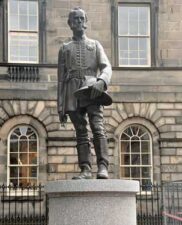
By the end of the 17th century parliament had rather belatedly introduced legislation restricting the height of new buildings although it did not stop people from adding new floors to existing buildings.
The 1703 Act allowed 12 newly appointed firemasters to recruit a number of men on an auxiliary basis.
With little training and armed with the most rudimentary equipment, they endeavoured to fight the fires that blighted the lives of those that lived in the tightly packed tenements of Edinburgh.
Traditionally the citizens of Edinburgh had built on the hill beneath the castle walls for protection and the Old Town had become an area of narrow wynds tightly packed lands (high tenements) and squalid closes. It was an ideal environment for fire to flourish.
Some of the most important public buildings had also been built close to the castle. St Giles’ Cathedral, Parliament House and the Tron Church all fought for space as new dwellings and businesses attached themselves to their walls.
Fire insurance companies
By the turn of the 18th century Fire Insurance Companies, which had started in London, were also introduced in Edinburgh.
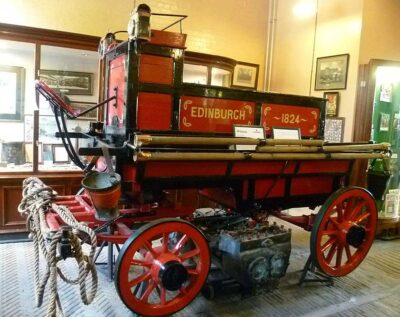
These companies had formed their own ‘fire service’ and would tackle a blaze only if the building was insured by the company and displayed a plaque fixed at the entrance detailing the relevant policy number.
But it was not uncommon for them to turn up at the scene of a fire only to find the building did not have the appropriate insurance.
On those occasions they might simply stand and watch the building burn or go home.
James Braidwood Superintendent of Fire Engines
Inevitably people realised that one integrated brigade was needed. But it wasn’t until 1824 that a man widely regarded as the father of the British Fire service became the Firemaster of Britain’s first municipal fire service.
The remarkable young man chosen as the first Superintendent of Fire Engines was James Braidwood, a native of Edinburgh and son of a wealthy builder and cabinetmaker. His early training as a surveyor and his knowledge of the city’s topography would prove invaluable.
Great Fire of Edinburgh, 1824
It was around 10 o’clock on the evening of 15 November 1824 only a few weeks after his appointment when the shout of fire was heard on the High Street.
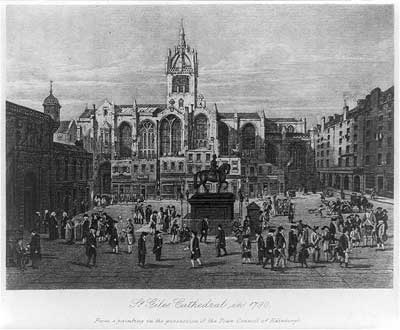
James Braidwood and his fledgling force had been given little time for planning or training and control of the city’s fire engines and authority over its men had still not been transferred to him. It was the worst possible start for him.
Within an hour a number of fire engines had arrived on the scene followed by the “Sheriff, Lord Provost, Baillies and other high personages.” In the absence of a central command, each of them saw fit to issue often contradictory orders to the firemen.
By the time they found a water supply the fire was out of control and the situation seemed hopeless. By midnight the fire which had started in a printer’s shop on the High Street had advanced down Fishmarket engulfing four tenement blocks in its path.
Edinburgh Evening Courant
A reporter from the Evening Courant an Edinburgh newspaper of the day described the scene: “Fire spread resistlessly…the scene was now awfully grand… the whole horizon was completely enveloped in lurid flame…
“the County Hall at one time appeared like a palace of light and the venerably steeple of St Giles reared itself amid the bright flames like a spectre awakened to behold the fall and ruin of the devoted city.”
The fire burned through the night defying the best efforts of the firemen to extinguish it. About mid-day on Tuesday just as the flames seemed to abate, the steeple of the Tron Church caught fire.
As the flames gathered pace through the wooden structure the lead lining began to melt. It poured off the sides like a molten river.
“1824 The Great Fire of Edinburgh on 15th November is the most calamitous fire the city has ever seen.”
Museum of Scottish Fire Heritage
Within a few hours, the worst of the fire was over and the firemen and other volunteers began to relax.
They took time to survey the vast swathes of destruction. Along the front of the High Street four lands of six stories each had been destroyed, down towards the Cowgate near Conn’s Close two more.
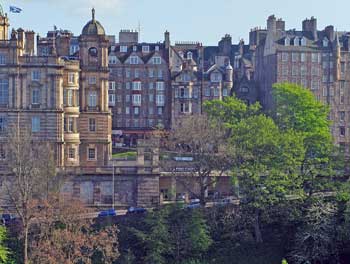
In the Old Assembly Close, four lands of seven stories together with six smaller buildings in Borthwick Close were ruined.
Old Fishmarket Close and along the front of Parliament Square were also left with gaping holes where the fire had ripped through the buildings.
But as the authorities wondered how the Old Town could ever be rebuilt it started again.
In a ten-story building in Parliament Square residents saw flames at the top floor windows.
Within an hour the building had been consumed and the fire raced eastwards but as with all fires it finally burned out, helped in no small way by a “great downpour.”
Thirteen people died including two firemen during the Great Fire of Edinburgh, many were injured and hundreds were made homeless.
The inquiry exonerated the superentendent from any blame realising that there was no clear directive about who, precisely was in command during the fire.
A law was quickly passed giving the Firemaster, or in his absence his deputy, complete control during a fire.
Undaunted by his early experiences, James Braidwood spent the next eight years training and moulding a group of men into a disciplined and effective force.
In 1830, still only 29, Braidwood published the first book on firefighting ever written in the English language:
On the Construction of Fire-engines and Apparatus, the Training of Firemen and the Methods of Proceeding in Cases of Fire.
In his biography of this remarkable man, Brian Henman describes this unique publication as the “foundation stone upon which the whole structure of modern British firefighting has been built.”
In 1832, he left Edinburgh to command London’s fire brigade. He died on duty at the Tooley Street fire in London’s docklands in 1861.
He was, in Brian Henman’s words a, “True Hero.”
The Firefighter Foundation says more about Braidwood and the history of firefighting.